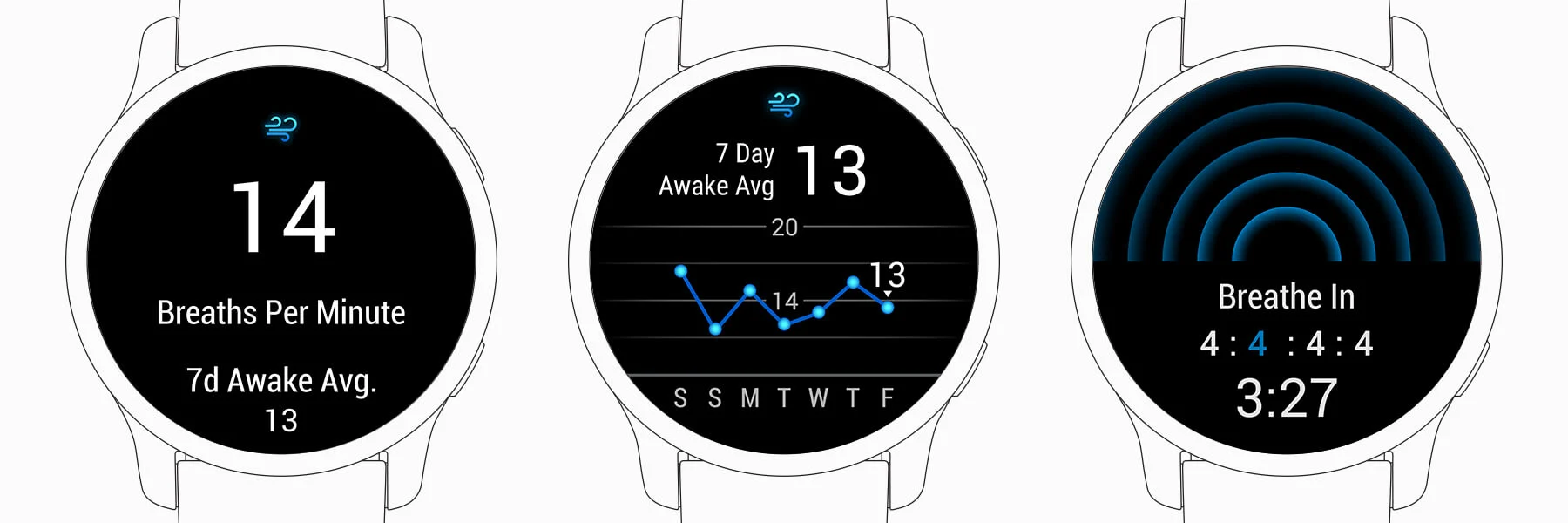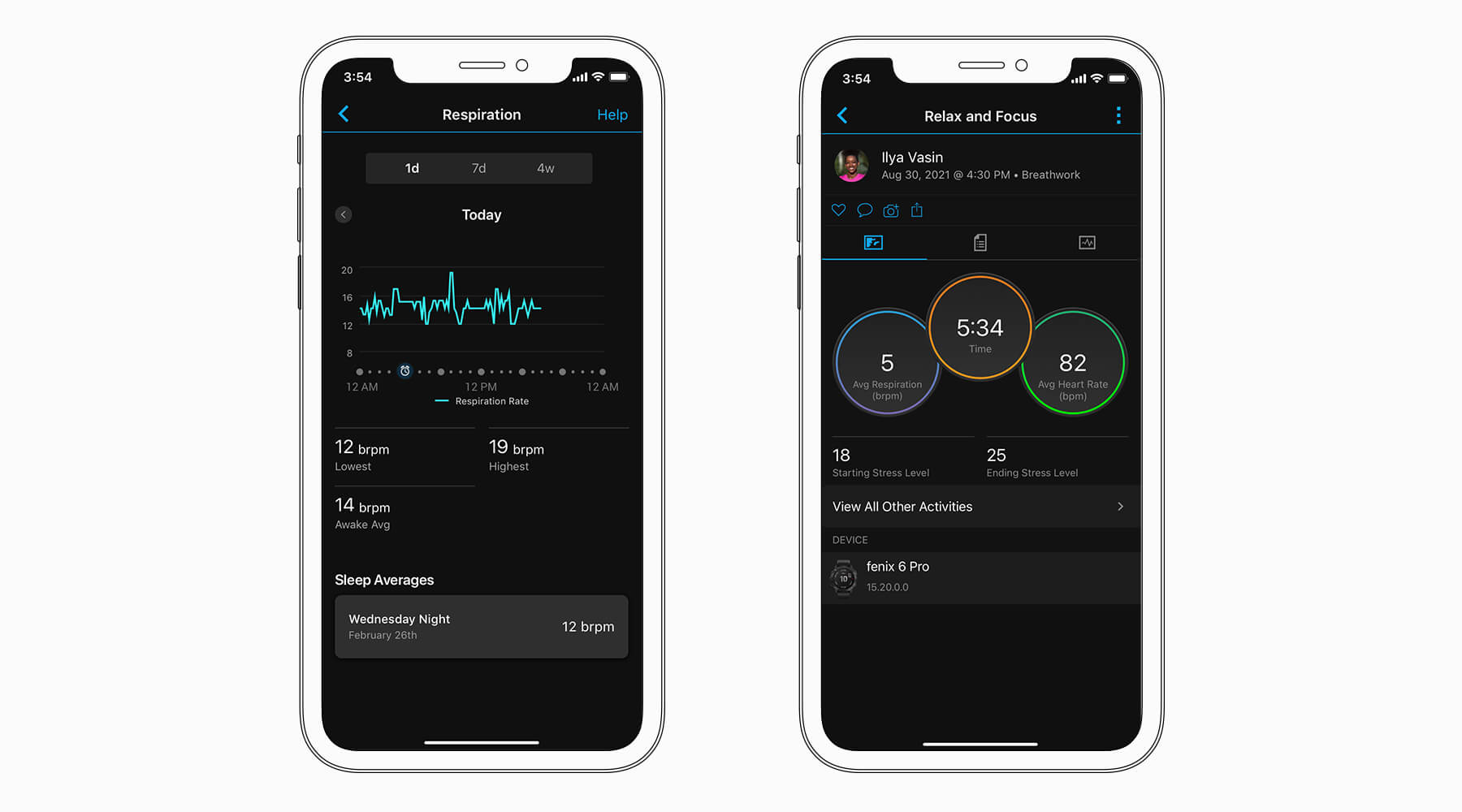
You can consciously control your breathing to an extent, but, for the most part, you inhale and exhale without ever thinking about it throughout the day and night. This is because your respiration rate — just like heart rate — is regulated by your autonomic nervous system (ANS). And because these instructions come from the same source, the instruction to breathe is coded into the messages your ANS sends to your heart1.
The time between consecutive heartbeats shortens slightly as you inhale and lengthens as you exhale. This remarkable phenomenon is known as respiratory sinus arrhythmia. An arrhythmia might sound bad, but this one is perfectly normal and healthy2.
In general, having lower respiration rates while at rest can be a good indicator of physical fitness. Fitter people tend to have lower respiration rates, even while active, and return to low respiration rates more quickly after activity.
A normal respiration rate for a resting adult is between 12 and 20 breaths per minute. This can vary from person to person, and you can expect it to be higher during periods of activity.
If your respiration rate rises well above or below your average during a period of inactivity, this may indicate an important change in your health status or possibly a problem with air quality. Keep in mind, your Garmin device is not intended for medical purposes. Any questions about your respiration readings should be answered by your physician or other qualified health care professional.
Whether you want to increase awareness, reduce stress, improve mental sharpness, boost work performance or prepare for sleep, breathwork — or mindful breathing — can help.
On compatible Garmin devices, you can use the built-in breathwork activity profile to practice three different breathing techniques: tranquillity, coherence, and relax and focus. Here’s what you can expect when you try out each technique.
This is a 10-minute activity that aims to help get you in a ready state for sleep. It slowly builds up until you can inhale for 4 seconds, hold for 7 seconds and exhale for 8 seconds.
This 15-minute activity should help you feel balanced and calm, rather than excited or overly relaxed. You will gradually slow down your breathing until you can achieve an even 6-second inhale and 6-second exhale.
This is another 15-minute activity meant to put you in state of focus and concentration, free from stress. Sometimes referred to as “box breathing” or “fourfold breath,” this technique helps you work toward a “4:4:4:4” breathing pattern, meaning a 4-second inhale, 4-second hold, 4-second exhale and 4-second hold.
There is also a 5-minute version of this activity, which is suggested when your watch detects unusually high stress spikes and gives you a “relax reminder” alert.
When you finish, your watch will display the duration of the activity, average heart rate during the activity and the detected change in stress from your breathwork activity. You can also review each activity in the Garmin Connect™ app to see graphs of your respiration rate, stress and heart rate during the session.
If breathwork exercises feel awkward at first, don’t give up. As you get accustomed to the patterns and learn to control your breathing better, you’ll start noticing the benefits more and more. Like any other exercise, it takes practice. But unlike many exercises, you don’t need any equipment or lessons. Just a quiet space … and maybe a pillow.
